The Bloodhound comes in 3 colors: Black and Tan, Liver and Tan (Red and Tan) and Red (Tawny). A small amount of white is allowed on the chest, feet and the tip of the tail. While there are variations of these colors, they still fall into one of these color patterns.
A predominantly black where the black "saddle" covers most of the body except for some red on the legs and face is often referred to as a "black" but is still considered a Black and Tan. This can also be the case with Liver and Tan where the dog is predominantly Liver.
The Reds
Black Muzzled Red
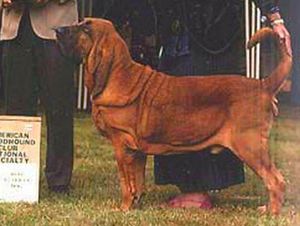
Solid Red
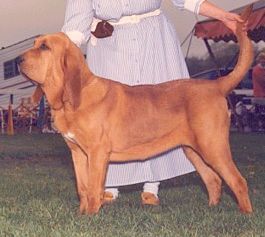
Liver Nosed Red
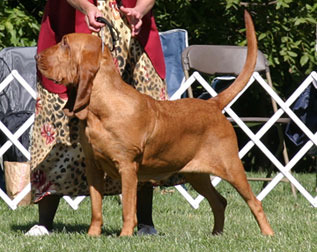
Liver and Tan
Liver and Tan
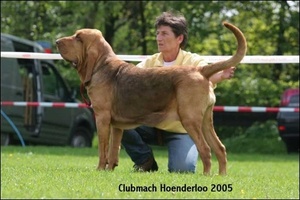
Full Coat Liver and Tan
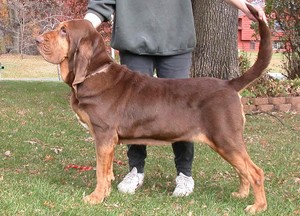
The Black and Tans
B1
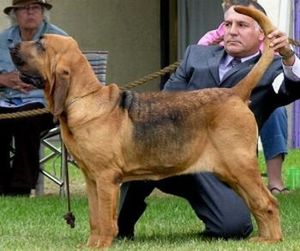
B2
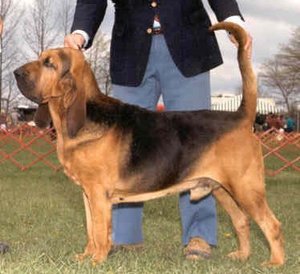
B3
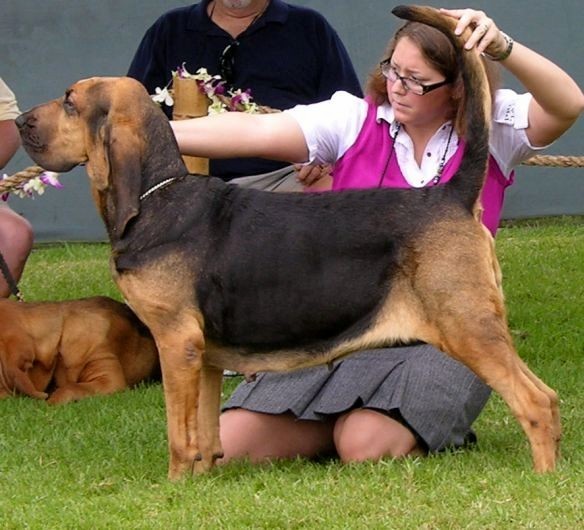
B4
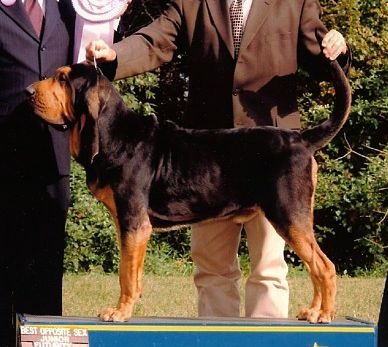
Saddles
For saddle patterns breeders use the terms B1 -B4 to grade the amount of saddle, this grading system is used on both Liver and Tan and Black and Tan dogs (not L1-L4). All of these saddle patterns are equally acceptable although a B4 or full coat is a recessive gene and is usually rare to see.
Although some colors can be rare there should not be a difference in price for Liver and Tan vs Black and Tan, this is usually a ploy from backyard breeders. When you see kennels that have majority full coat livers or full coat black, understand that these are recessives.. Many backyard breeders have some of the most beautiful coloured hounds but this may be the only aspect they are breeding for. There is no preference given in the ring for amount of saddle.
Notes About Colour
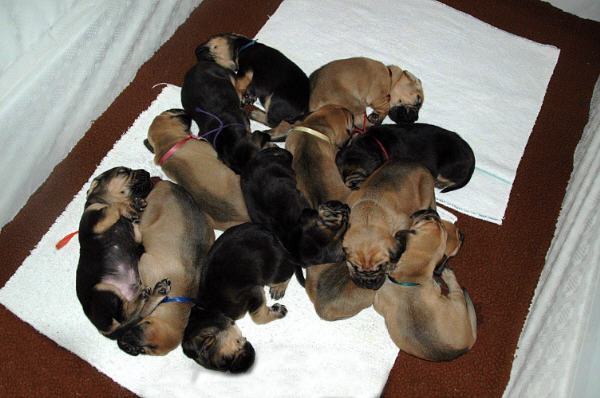
Full Coat BT or LT is usually hard to identify until puppies are 6-12 weeks old. Full Coats tend to grow with their color rather than grow out of it. Some people do not realize how much color their BT or LT pup will lose throughout the first 2 years. All Red puppies are born with a stripe of darker guard hairs down their back, some darker than others. This black stripe tends to fade before 6 months of age.
All BT puppies have a full saddle at birth , you do not see split saddles or grizzled saddles on newborns. Even if a BT puppy grows and has barely a trace of their saddle left they are still considered a BT, not a Red. As you can see in the picture, it is very easy to identify Red vs BT.
Basics of Colour Genetics
Black & Tan = BT, Liver & Tan = LT, Red = R
- BT + BT= will produce all BT puppies (amount of saddle is dependant on parents and lineage
- BT (carrying LT gene) + BT (carrying LT gene)= BT + LT puppies only when both parents are carriers for LT
- LT + BT (non LT carrier) = all BT puppies
- LT + LT = all LT puppies, never BT even if both LT have BT parents
- Red is only produced if one of the parents is a Red
- R + BT = Red and BT puppies providing the Red had a BT parent
- R( LT carrier) + BT (LT carrier)= can potentially produce all colors of puppies R,BT,LT and liver nosed reds
- Reds who are born of 2 Red parents and are Homozygous Reds will go on to only producing Reds regardless of what they are bred to.
In the End Though...
Since there are SO many other important factors to consider before breeding, colour should be at the bottom of any responsible breeder's list of priorities.
